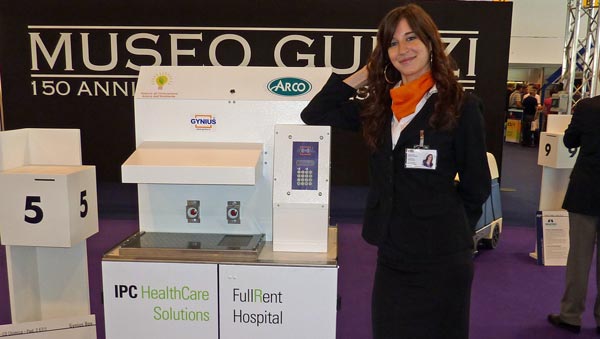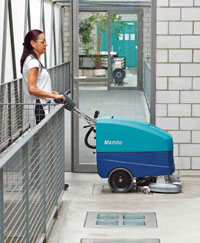
It’s something we hear every day; technology continues to change and improve our lives. Yet, many of us continue to miss the benefits of technology, unable to interpret the long-term benefits or understand how to implement or use efficiently.
But once we understand how technology can link into day-to-day operations and progression of our activities, it can reduce costs and improve human productivity.
From data-driven tools to smart equipment that can automate cleaning processes, here are some well-known technologies that are yet to find their place within many businesses.
Automation and robotics
Automation has been around for quite a while although people still challenge its capability, with slower adoption noted in conservative industries and organisations.
In every commercial operation, daily cleaning procedures are an important part of business, but labour intensive, repetitive tasks are always subject to human error.
Now is the time to start automating menial routines and repetitive cleaning tasks by passing on these responsibilities to robotic machines.
While robots autonomously clean, cleaners now have time to focus on more complex tasks in the environment. The more a business automates, the more possibility you gain to improve human productivity, reduce labour costs and save time.
This productivity was shown in a recent client case study, where a cleaner deployed deploys a fleet of four floor cleaning robots to clean four different large complex areas.
While the client cleaned a complex bathroom environment, one hour later, the client returned to the robots that had completed four hours’ worth of labour.
The robots are capable to clean 100 per cent of the area without missing a speck of dust, as well as accessing difficult corners that are not reachable by a human with a vacuum cleaner.
Management can also view the cleaning progress in real time or view the robots’ routes log from any devices.
This takes cleaning task management to a new level. Never before could you validate cleaning, but now, smart tracking technology capability can show what’s been cleaned and what’s been missed.
Smart management systems
Smart devices, including Internet of Things (IoT) devices enable us to leverage efficiency when completing smaller tasks that often cost time.
Today there are smart rubbish bins that can monitor the levels of rubbish in the bin. Some bins can even compact rubbish and notify management when it needs to be emptied, saving valuable time and energy. Smart IoT devices in commercial buildings will soon become a norm.
Many organisations are still comfortable with manual pen and paper report management for several reasons, including an inability to adapt to new digital systems, the size of an organisation and the number of employees.
Adapting to a new system might be a daunting process to begin with but investing in it will improve efficiency for the long-term.
Imagine if staff and other related users were connected throughout the day, able to view the progress of cleaning and notify hygiene and disinfection control within rooms. Maps of rooms and buildings can be updated in real-time, displaying detailed day-to-day planning of cleaning activities.
Cleaning staff can report back on completed tasks using comments and photos. These management systems may take a while to get everyone used to it, but give it time and you will save.
The new generation of automated cleaning machines are also equipped with similar technology. This innovation comes with real-time monitoring and tracking systems to ensure the job is done and performance is measurable.
Adapting to this system can increase efficiency in cleaning and maintenance equipment, and operators can easily track how long a machine has been used with thorough information about maintenance schedules, equipment security, battery and motor performance, as well as service deadlines.
This information can be accessed remotely from any PC, table, or smartphone and also includes easy-to-follow on-site training video links.
Cordless machinery
Cordless machines have been around for many years, but since not all machines are as durable as the corded ones, cordless could not become as trustworthy as its opponent.
These machines do not need electric supply and often obtain energy from renewable batteries. They do not restrict movement, providing the freedom required to move around corners easily. Since they are usually lightweight, cleaners can clean more efficiently.
To make sure this innovation is worth investing in, operators need to understand that cordless cleaners are engineered to leverage efficiency in daily routines, and are not necessarily applicable for monthly deep cleaning. Ensure you choose a machine that is well constructed, versatile, and acoustically engineered to the environment it will be used in.
Eco-friendly machinery
Eco-friendly machines are one of the best innovations of all time. Eco-smart equipment decreases energy and chemical use, providing for a more sustainable future.
Cutting electricity, gas or fuel also means cutting carbon dioxide and greenhouse emissions. And the less you use energy and chemicals, the more money you can save.
However, operators should ensure the eco-friendly product must substantially reduce its environmental footprint compared with traditional method. It should also include green cleaning agents, low water usage, as well as the use of microfibre.
This article first appeared in the July/August issue of INCLEAN magazine.
Comment below to have your say on this story.
If you have a news story or tip-off, get in touch at info@3.106.117.80.
Sign up to INCLEAN’s newsletter.



